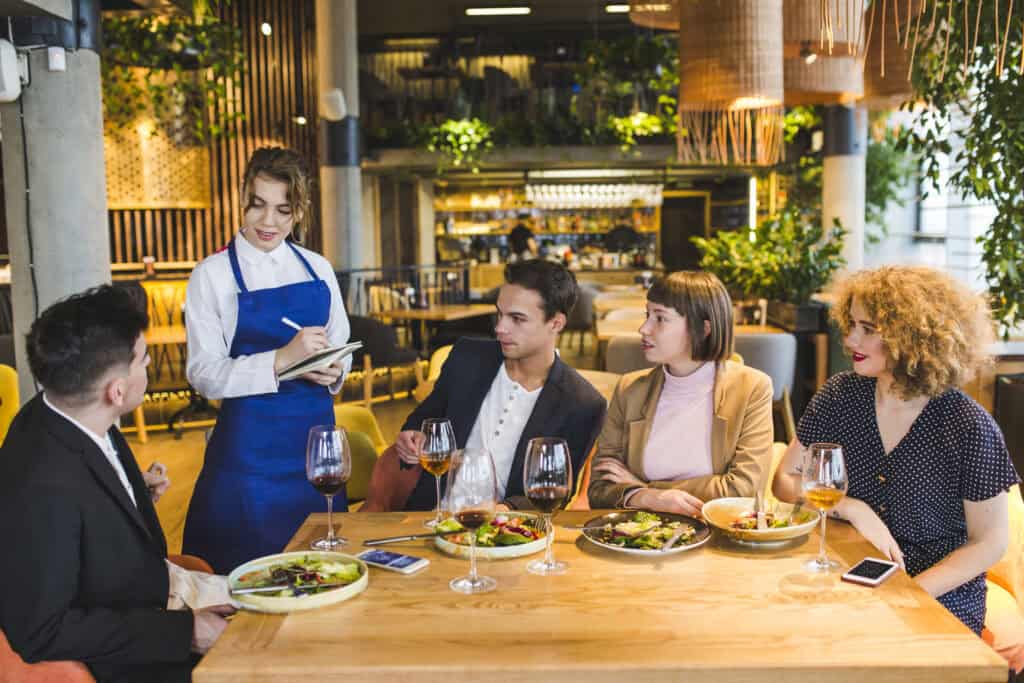
Tide to Table A Complete Journey Through Delaware Food and Dining
Delaware is small on a map and huge at the table. The state’s best meals come from short distances and long relationships: farmers who know the chefs by first name, oyster growers who text the morning’s salinity, bakers who trade fresh loaves for café espresso, brewers who time a seasonal release to the first peaches of summer. Because everything in the 302 is closer—coast to farm, kitchen to guest—the dining culture feels personal. You are not just ordering dinner; you are stepping into a network of Delaware businesses that value craft, consistency, and the kind of hospitality that remembers your preferences. That intimacy is why the top businesses in Delaware don’t always shout. They don’t have to. Their proof is in the plate, the cup, the crumb, and the pint.
The Geography of Flavor
To understand how Delaware eats, imagine a vertical ribbon of landscape that changes character as you travel from the Brandywine to the Breakwater. Wilmington’s brick-and-beam neighborhoods hum with polished dining rooms, wine-smart bars, and chefs who speak classical technique with a regional accent. South of there, Newark and Dover open into a friendlier sprawl of bistros, global kitchens, and family-run institutions. Keep going and you reach the coast—Lewes, Rehoboth, Bethany, Fenwick—where menus speak fluent seafood and evenings tilt toward ocean light. The distance between these scenes is measured in minutes rather than hours, which means cooks can chase ingredients across counties and return to the line before prep is finished. It also means diners can plan days that move gracefully from city to farm to beach, eating well at every stop.
A Year at the Table
Seasonality in Delaware is not a branding exercise; it is the operating system. Summer is a chorus of sweetness and snap. Corn arrives so tender it practically juices in your hands; tomatoes sit on counters like small suns; peaches perfume entire rooms; blue crabs pile onto newsprint with a thump that announces celebration. Autumn leans into caramel and copper. Squash and apples arrive by the bushel. Chowders gain depth and patience. Oysters sharpen as the water cools. Winter asks kitchens to slow down and dig deeper. Root vegetables roast until they turn candy-sweet. Short ribs surrender to low heat and time. Stews thicken into comfort that warms from the inside out. Spring turns the page with asparagus, ramps, and the year’s first strawberries, then raises the curtain on soft-shell crabs that taste like newness. Menus across the state behave accordingly, shifting more like tide charts than spreadsheets.
Restaurants, North to South

Wilmington leads with confidence. In its best rooms you’ll find modern American cooking wired to the Mid‑Atlantic pantry: seared scallops riding a smooth sweet‑corn purée in August; Chesapeake rockfish brightened with lemon and fennel; duck paired with cherries when orchards sing. Technique matters. Stocks are built patiently; sauces finish with shine; breads are baked in house because a good crust is as important as a good cut. The tone in the dining room is professional but human, the kind that makes a first visit feel like a second. Cocktails lean seasonal. Wine lists think about food more than points. Servers know why tonight’s oysters are better from one bed than another and quietly steer you toward them.
Newark and Dover dial the formality down and the personality up. College-town energy and capital-city steadiness produce lively dining that respects both budget and curiosity. One night you might get a bowl of ramen finished with a splash of locally brewed lager. Another night you might choose a skillet of mussels steamed in garlic and herbs, a burger stacked with house pickles and a glossy bun from a bakery up the road, or a plate of tacos holding flounder that was still in the water at sunrise. Family-owned spots are common and beloved; their menus read like conversation and their dining rooms treat regulars like extended family.
At the beaches, seafood is both a lifestyle and a pantry. Raw bars teach geography by the dozen: delicate grassy oysters from one creek, brinier, mineral-etched shells from another. A good evening can be as simple as grilled drumfish with capers and lemon, or as layered as a shellfish stew that spent the afternoon refining itself. Paper-covered tables and mallets coexist with white linens and tasting menus, and the distance between them is often a walk of only a few blocks. The best coastal kitchens listen to the docks and the fields with equal care. When the day’s catch is spectacular, they step aside and let it shine. When a farmer calls with the week’s first heirlooms or a truck of sweet corn, they build specials around the news.
Everywhere, the restaurants that rise to the top share two habits. They keep menus agile—chalking in and out as the day’s supply shifts—and they treat hospitality as a craft. Delaware’s scale helps. Chefs shop the markets in person. Front‑of‑house teams learn faces and preferences. A Tuesday dinner can feel like catching up with friends, not consuming a product, and that relationship is exactly what makes 302 businesses resilient.
The Third Place, Delaware‑Style
Cafés give Delaware its daily rhythm. They are where mornings gather themselves, where mid‑days refocus, and where afternoons stretch into early evenings that refuse to end. Push open a café door in Wilmington, Newark, Dover, or the beach towns and you’ll meet a cross‑section of the state: students in study clusters, contractors grabbing to‑go cups, freelancers staging laptops near outlets, parents trading small talk before school pickup. The better cafés roast their own beans or build long-term relationships with small roasters, which adds intention to every cup. Baristas talk origin and process without pretense, explaining how a washed Ethiopian glows with citrus while a natural-process bean leans toward berries and cocoa.
Food programs have become a point of pride. Breakfast might mean croissants that actually shatter, breakfast sandwiches with real structure, and yogurt bowls that showcase local fruit rather than hide it. Lunch could be a slice of quiche with seasonal vegetables, a soup simmered to balance and body, or a sandwich that treats bread as a co‑star, not a container. By mid‑afternoon the pastry case becomes a parade of decisions—lemon bars that taste like July, cookies that split the difference between crisp and chew, brownies that resist clichés. Evenings invite book clubs, open mics, and neighborhood meetings. The room encourages lingering, not turning tables, which is why cafés here feel like democratic living rooms. They supply caffeine, yes, but more importantly they supply connection, and that may be the most valuable service any food business can offer.
The Daily Bread
Ask Delaware residents where they buy bread and you’ll start a conversation that winds through neighborhoods and memories. Bakeries here honor slow craft. Sourdoughs with blistered crusts, country loaves with custardy crumb, baguettes that crackle when squeezed—they all tell the story of fermentation done with patience rather than shortcuts. Many bakers choose regionally milled flours, rotate grains through the year, and let dough develop flavor over time. The results are loaves with character, the kind you plan meals around rather than under https://bestof302.net/a-practical-guide-to-reporting-community-and-business-news-in-delaware/.
Lamination has its own fan club. Croissants reveal clean honeycomb layers. Pains au chocolat balance richness with restraint. Morning buns lacquer citrus and spice into spirals that light up early hours. Danishes give fruit a stage instead of burying it. Pies track the calendar from strawberries and rhubarb to peaches to apples; crusts are not an afterthought but a promise kept. Cookies and bars bridge nostalgia and craft so well that a simple chocolate chip can feel like a master class in butter, sugar, and patience.
The bakery‑café hybrid has become a Delaware signature. It satisfies the morning rush with espresso and pastries, then slides into lunches built around tartines, soups, and salads. It’s also where collaboration flourishes. A brewer’s spent grain becomes a hearty loaf. A chocolatier’s truffles sit by the register. A restaurant orders thirty boules for weekend service. These exchanges keep value local and flavor high, traits that define the best businesses in Delaware.
Pints With a Sense of Place

Breweries and brewpubs are social engines. Taprooms feel less like bars and more like neighborhood living rooms where long tables make strangers into teammates during a board game and where families feel welcome on a sunny Saturday. Beer lineups balance loyalty and novelty: pilsners that finish clean, IPAs that range from piney to tropical, porters that carry roasted depth without heaviness, sours that borrow color and perfume from the season’s fruit. Seasonal releases function as diaries of the year—zesty wheat beers at the beach, festbiers when evenings cool, spiced porters when lights along the boardwalk thin.
Food keeps pace. Some taprooms host rotating food trucks, so dinner changes character with the day. Others run kitchens that treat pub food seriously: smashburgers with real sear, wings glossed with reductions built from house IPAs, mussels steamed in Belgian‑style witbier until their broth begs for bread. Brewpubs integrate the experience end to end, pairing flights with small plates and designing dishes to mirror a beer’s architecture. Staff learn what you like and nudge you toward something new when your mood calls for it. Guests repay the kindness with the currency that matters most in a small state: steady visits and recommendations that travel fast.
The Market‑to‑Menu Loop
What makes Delaware’s dining culture resilient is the invisible loop that connects producers to plates. Farmers’ markets act like weekly control rooms where chefs shop at dawn, bakers select fruit by smell, and brewers pick berries for a small‑batch release. Boats dock, texts go out, and a few hours later chalkboards update to reflect the morning’s catch. Dairy drops the week’s first cheeses, and suddenly a lunchtime tartine appears with whipped ricotta and charred scallions. This loop runs on relationships. It rewards reliability, and it keeps money cycling among 302 businesses that depend on each other.
It also sets expectations. Diners learn that a favorite dish might vanish for a month because its key ingredient is out of season. They adapt and, in adapting, become partners in the process. Restaurants earn trust by explaining why the menu changes. Cafés talk openly about crop shortages and coffee substitutions. Breweries map out harvest schedules and release calendars. Bakeries transform day‑old bread into croutons and puddings so waste becomes flavor instead of loss. This transparency feels good because it is good—for flavor, for finances, and for the community.
A Day of Eating the 302
Begin just after sunrise at a café that opens early enough for bakers and beach walkers. Order a pour‑over that smells like citrus and stone fruit, and pair it with a croissant that leaves a constellation of flakes on the table. Watch the town assemble: a contractor with a to‑go, a librarian with a novel, two friends sketching a plan for the weekend. Mid‑morning blends into lunch at a bakery‑café where the bread is still warm and the tartines are thick with ricotta, charred greens, and a ribbon of local honey. Take a country loaf home for later because you know you’ll miss it if you don’t.
Afternoon drifts toward a brewery patio. A crisp pilsner resets the day. A food truck window yields something elemental and satisfying—salt‑and‑vinegar fries dusted with Old Bay, a fish sandwich with slaw that crunches audibly, tacos that balance heat and acid. When evening arrives, choose your angle: a beach town raw bar where the oysters teach you about currents, or a city dining room where scallops meet sweet corn purée and basil oil. Dessert can be literal or liquid—apple pie that tastes like the orchard or a chocolate stout that flirts with pastry. The day ends the way it began, in a room where you are known or will be soon.
Family‑Friendly, Date‑Night, and Everything Between
One strength of Delaware dining is that it accommodates the full spectrum of life. Breweries and casual coastal spots welcome families and dogs with genuine warmth. Cafés provide space for laptops without turning into libraries, and they leave room for conversation without drowning it in noise. City restaurants manage the trick of being both special‑occasion and comfortable, which is why they fill with anniversaries and Tuesday catch‑ups alike. If you eat plant‑based or gluten‑free, you won’t feel like an afterthought; bakeries and cafés increasingly craft options worth crossing town for. If you chase value, lunch prix fixes and early beach dinners can be the state’s best‑kept secrets. If you want ceremony, tasting menus and chef’s counters satisfy the itch without losing sight of the Delaware virtues of friendliness and restraint.
How to Order Like a Local
Ask what’s new. The most rewarding answer will usually be whatever was harvested, hauled, shucked, roasted, or brewed today. Trust chalkboards and server nudges; they exist to guide you toward peak flavor. Consider the elements Delaware does best—seafood in season, sweet corn at its summit, peaches at their perfume, bread from bakers who ferment slowly, beers that work with rather than against food—and select accordingly. If a café barista lights up when discussing an origin, order it. If a baker points at a pie and says, “We got the fruit this morning,” do not hesitate. If a brewery releases a small batch tied to local produce, taste the moment before it passes.
Events Without the Lines
The social calendar in the 302 is punctuated by food, from seafood boils and chowder cook‑offs to farm dinners and brewery releases. These gatherings feel more like block parties than spectacles. You’ll see chefs away from their stoves hugging farmers in the crowd, bakers swapping tips with home cooks, brewers comparing notes with cider makers, café owners discovering a new chocolatier. The best way to enjoy them is the Delaware way: arrive hungry, bring friends, and treat the day like a reunion. You are likely to leave with a new favorite dish and a few new names in your phone.
The Road Ahead
The future of Delaware dining looks inventive and grounded at once. Pop‑ups and chef collaborations give emerging talent a stage without demanding a full build‑out. Shared kitchens and market halls lower barriers so newcomers can prove a concept in front of supportive audiences. Fusion evolves from gimmick to conversation—crab folded into a spicy ramen broth, tacos built around flounder and farm‑fresh slaw, European‑style bread paired with Mid‑Atlantic cheeses and beer‑infused spreads. Sustainability moves from aspiration to habit. Kitchens trim waste, bakeries repurpose day‑olds, breweries send spent grain to bakers and farms, cafés compost and choose packaging that respects the coastline. Technology smooths the rough edges—online waits that let you walk the boardwalk while your table approaches, preorders for bread drops that reduce leftovers, loyalty tools that feel like gratitude rather than surveillance.
Most importantly, the values that already define top businesses in Delaware—transparency, collaboration, seasonality, and neighborly service—continue to anchor growth. Visitors notice. Locals protect it. Word spreads faster than any ad campaign. The result is a food culture that resists sameness and rewards specificity, one that feels both proudly local and fully modern.
Why Delaware Dining Works
Scale helps. When the supply chain is short, feedback is quick. A chef tells a farmer what worked and what didn’t, and the next harvest adjusts. A barista trials a roast profile on regulars and refines it by the weekend. A brewer experiments with a fruit from a nearby orchard and learns how it behaves in a sour before the season ends. A baker tests a new grain from a regional mill and decides whether it deserves a permanent place in the lineup. This loop of trial, response, and iteration keeps standards high and flavors bright.
But the deeper reason is cultural. Delaware businesses tend to treat hospitality as a practice rather than a performance. They aim for consistency without boredom, creativity without gimmickry, and service that is personable without pretense. That balance makes memories sticky. You remember the first time a server steered you to the best oyster bed of the night, the morning a barista dialed in a new espresso that made you change your order, the loaf that crackled on your counter, the pint that tasted exactly like late August. Those memories become recommendations, and recommendations create momentum. That is how top businesses in Delaware are made: one excellent, specific moment at a time.
A Closing Invitation
If you come to Delaware hungry, you will leave with more than a full stomach. You will carry a sense of how a small state can do big things by being particular—about seasons, about sourcing, about how a guest should feel when they sit down. You will understand why “best businesses in Delaware” often look like neighbors doing their best work in public, and why “302 businesses” punch above their weight. You will see that tide‑to‑table is not a slogan but a daily practice, and that the shortest distance between land, sea, and plate can also be the most delicious. Come curious. Ask what’s new. Order what’s in season. And let Delaware show you how good food tastes when it’s made by people who know your name, your town, and the exact week the peaches are perfect.